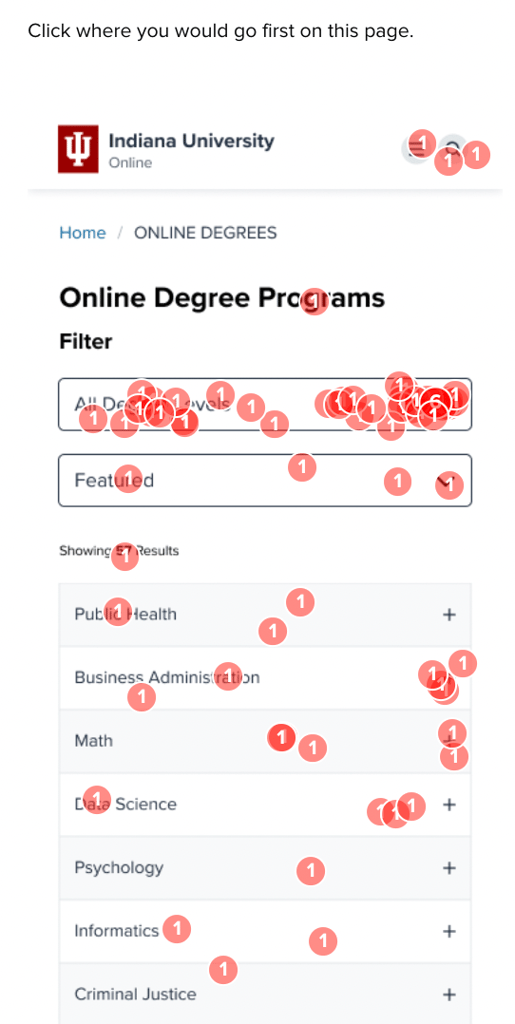Imagine launching a new feature without proper user testing. At first, it might seem like you’re saving time. However, as user feedback starts coming in, you realize the feature has many usability problems. Fixing these problems now takes more time and resources than it would have if they had been addressed earlier. This is a classic example of design debt.
Joana Cerejo’s article offers a practical guide to measuring and managing design debt, focusing on transforming businesses into user-centered successes. Design debt is similar to technical debt, reflecting the accumulated effects of past design and development decisions that negatively impact user experience.
Debt is a figure of speech to illustrate the effort needed to fix errors and quality deficits that were introduced during development and are affecting the business value.

If ignored, it’s a hidden cost that can seriously hinder your product’s success and user satisfaction. Think of it as a backlog of design flaws and inefficiencies that need fixing to improve your UX.
What is Design Debt?
Design debt, much like technical debt, refers to the cost of choosing an easier, quicker solution today instead of a better, more thorough approach that might take longer. While technical debt focuses on the codebase, design debt impacts the user interface (UI) and UX, leading to a product that might look great initially but struggles to meet user needs effectively over time.

Design debt piles up when quick fixes, shortcuts, and temporary solutions clutter the user experience (UX). Over time, these little issues add up, creating a big problem that affects your product’s overall usability and efficiency. Think of design debt like credit card debt: small purchases seem manageable at first, but they can snowball into a significant burden if not addressed promptly.
Recognizing Design Debt
Recognizing design debt early can save you a lot of headaches down the line. Here are some common symptoms that indicate your product might be suffering from design debt:
- User Complaints and Feedback: If you consistently receive feedback about confusing navigation, difficult-to-use features, or a lack of coherence in your UI, these are red flags.
- High Drop-off Rates: A significant drop-off rate at key stages of your user journey often signals usability issues that need addressing.
- Frequent Design Changes: Constantly tweaking and revising your design without a clear strategy can accumulate debt, as these changes might not always align with a coherent user experience strategy.
By understanding the types of design debt and recognizing the symptoms, you can start addressing the root causes and plan for a more user-centric product development approach. In the next sections, we’ll dive deeper into measuring, managing, and ultimately reducing design debt to enhance your UX and drive business success.
How Design Debt Accumulates
Design debt accumulates through various scenarios:
- Rushed Product Releases: Tight deadlines force designers to compromise on quality.
- Lack of User Research: Insufficient user feedback results in features that don’t meet user needs.
- Inconsistent Design Standards: Different team members use varied design practices, leading to a disjointed product.
- Ignored Minor Issues: Small UX problems are often overlooked but add up over time.
Every quick fix or ignored minor issue contributes to the design debt, making future improvements more challenging and costly.
Difference Between Design Debt and Technical Debt
While both design and technical debt stem from taking shortcuts, they impact different aspects of the product:
- Technical Debt: Relates to the codebase and architecture. It can slow down development and make future code changes more difficult.
- Design Debt affects the user interface and experience, making the product harder for users to navigate and enjoy.
Both types of debt require careful management to ensure they don’t hinder product development and user satisfaction. However, design debt directly impacts the user’s interaction with the product, making it crucial for maintaining a high-quality UX.
Understanding design debt is the first step in managing it. By recognizing how it builds up and differentiating it from technical debt, you can begin to take proactive measures to address and reduce it. The following sections’ll dive deeper into identifying, measuring, and managing design debt to improve your product’s UX.
Types of Design Debt
UX Design Debt
UX design debt directly affects your business goals by impacting adoption rates, learnability, and user satisfaction. When your design decisions make it harder for users to understand and navigate your product, you’re racking up UX debt. This debt often stems from neglecting user feedback, insufficient usability testing, and poor design choices that don’t prioritize the user experience.
Operational Design Debt
Operational design debt arises from inefficient processes and poor organizational structures that support design and development teams. This could mean anything from outdated tools and workflows to a lack of collaboration between departments. When your team navigates bureaucratic hurdles more than creating great designs, you’ve got operational debt.
Visual Design Debt
Visual design debt includes UI inconsistencies that undermine your product’s credibility. It’s the collection of mismatched fonts, inconsistent button styles, and other visual elements that don’t align with your brand guidelines. These inconsistencies can confuse users and make your product seem less professional and trustworthy.
Testing and Research Debt
Testing and research debt builds up when you skip or skimp on UX research and testing phases. This leads to poor user experiences and lower product adoption. Without proper research, your design decisions might not reflect what your users need or want, resulting in features that miss the mark.
Resources
Design Debt Resources
Here are some design debt links. Design debt accumulates when quick design decisions compromise long-term quality, akin to technical debt but in design. It can arise from inconsistent design patterns, rushed timelines, or lack of documentation. Managing it involves prioritizing design consistency, allocating time for refactoring, and balancing short-term gains with long-term sustainability.
-
What is design debt and why you should treat it seriously
, by
Michal Mazur
-
Design Debt – Where It Comes From and How to Manage It
, by
Billy Sweetman
-
Dealing with design debt (video)
, by
Neil Turner
-
Product design debt versus Technical debt
, by
Andrew Chen
-
Design Debt
, by
Austin Knight
Measuring Design Debt
Measuring design debt is the first step toward managing and reducing it. Tracking key metrics and using strategic frameworks can align your efforts with business objectives and ensure your product meets user needs.
Key Metrics to Track
- User Satisfaction Scores: Regularly collect user satisfaction scores to gauge how users feel about your product. A declining score may indicate growing design debt.
- Task Completion Rates: Measure how easily users can complete key tasks. Low completion rates often signal usability issues.
- Error Rates: Track the frequency and types of errors users encounter. High error rates suggest areas where the design is confusing or ineffective.
Strategic Frameworks
- Alignment with Business Objectives: Ensure that your design debt measurement aligns with your business goals. For example, if increasing user retention is a priority, focus on metrics that reflect user engagement and satisfaction.
- Regular Audits and Reviews: Conduct regular design audits to identify and assess areas of design debt. Use these audits to inform your strategy and prioritize issues based on their impact on business objectives.
- User Feedback Loops: Establish continuous feedback loops with your users. Platforms like Helio (helio.app) can help you collect real-time feedback, enabling you to measure design debt effectively and make informed decisions.
Helio Example
Measuring design debt often involves benchmark testing, in which we evaluate the performance of the baseline design through UX metrics, and then use the data signals to identify areas for improvement on the site.
For instance, in our work redesigning Indiana University’s online website, we identified the application flow as a place for improvement, and focused on the Apply page as a key point-of-conversion:

To gauge how well our baseline design was performing, we asked participants to interact with the design through a series of clicks, and then respond to some evaluative questions. These evaluative questions included overall satisfaction with the look of the page, expected time to complete the application based on the info provided, and expected ease-of-use of the application process:

The team was pleased to see that the majority of participants’ expectations were below 30 minutes for completion of the application. Future versions of the page will tell us whether our design iterations improved these expectations.
The most telling signals came through the evaluative questions asked when participants first see the page, and then right before they leave the survey. The Customer Satisfaction (CSAT) score was underwhelming at net 13% (the sum of positive reactions minus the sum of neutral and negative reactions), and the participant’s Feelings about their interaction with the page was also low at net 20%:

Ideally, the majority of participants for this type of evaluation would fall into the Very Satisfied bucket, and produce a net satisfaction closer to 50%.
This lack of satisfaction and perceived easiness with the current Apply page were clear signals that this point-of-conversion needed significant improvements through rounds of iterative design and testing.
Managing Design Debt
Once you’ve measured your design debt, the next step is managing it. Effective management involves prioritizing issues and creating a roadmap for addressing them.
Prioritization
- Severity and Impact: Prioritize design debt issues based on their severity and impact on the user experience and business goals. Focus on high-impact areas that significantly hinder usability or user satisfaction.
- User Feedback: Leverage user feedback to prioritize issues that matter most to your users. Use tools like Helio to gather and analyze feedback efficiently.
Roadmap Development
- Integration into Product Development Cycle: Integrate design debt management into your regular product development cycle. Create a clear plan for addressing debt incrementally rather than all at once.
- Milestones and Goals: Set specific milestones and goals for reducing design debt. Break down larger issues into manageable tasks and assign deadlines to motivate the team.
- Collaboration and Communication: Foster collaboration and communication across teams. Ensure everyone understands the importance of reducing design debt and how their work contributes to this goal.
Helio Example
User data is key in prioritizing concepts to pursue when attempting to manage design debt. We use Helio to rank our ideas with an Opportunity Index, in which the team’s ideas are entered with a description of the problem it’s solving for the company and why, and then stakeholder feedback and user data are used to rank the list of opportunities.
For example,
An e-commerce formal clothing company named Getup utilized Helio’s Opportunity Index to prioritize concepts for their minimum viable product (MVP).
The team began by compiling a list of feature ideas that excited them the most, such as personal online style experts, push-to-store options for trying on clothes in person, and outfit suggestions for events.

The team listed these ideas into the Opportunity Index framework, detailing the problem each concept solves, its importance, and its potential benefits for the business.

With dozens of ideas on the table, survey questions were asked to gauge the value of these ideas, such as this numerical scale interest question:

In this instance, most participants show interest levels between 8 and 10, though surprisingly, more than 10% rate their interest between 0 and 3. This suggests a high level of interest in the idea but also some distrust in the concept as presented.
After collecting data on each feature idea, the team translates the value of that idea into a 1 – 5 rating, reflecting its importance to a Getup user. For example, given the data above, this would earn a 4 out of 5 user rating since many online consumers showed interest, but there was a notable spike of doubt among over 10% of the audience.

The team lists the data observation supporting each user rating on the right, along with a link to the raw data itself.
Now, with a user rating for each opportunity in hand, the team can also apply Biz and Tech ratings to each idea based on input from the Getup team. Getup’s engineering team rates the technical feasibility of each idea on a 1 – 5 scale (5 being the easiest), and the project’s key stakeholders provide input on the Business value, also on a 1 – 5 scale.

The team evaluates the final total out of 15 for each opportunity, with the highest-ranking opportunities representing a combination of importance to the business and users, and simplicity to build from a technical standpoint.
This opportunity ranking technique has produced a highly detailed ranking of each idea that Getup considered for their e-commerce MVP, employing data-backed decision-making and input from multiple teams across Getup’s organization.
Reducing Design Debt
Reducing design debt requires a proactive approach, focusing on iterative design and continuous research to maintain a user-centric product.
Iterative Design
- Continuous Improvement: Embrace iterative design to improve your product continuously. Regularly update and refine your design based on user feedback and testing results.
- Prototype Testing: Use prototype testing to identify and fix issues early. Platforms like Helio allow you to test designs with real users, providing valuable insights for improvement.
Continuous Research
- Ongoing UX Research: Conduct ongoing UX research to align with user needs and expectations. Helio’s platform makes it easy to gather and analyze user insights continuously.
- User Input: Regularly incorporate user input into your design process. This helps prevent the accumulation of design debt and ensures your product evolves with your users.
Best Practices
- Regular Design Reviews: Schedule regular design reviews to identify potential issues early. Involve stakeholders from different departments to get diverse perspectives.
- Stakeholder Alignment: Ensure all stakeholders are on the same page about the importance of reducing design debt. Communicate the benefits clearly and involve them in the decision-making process.
- Training and Education: Invest in training and education for your design and development teams. Keeping your team updated on best practices and new tools can help minimize design debt.
Helio Example
Indiana University redesigned its website to improve the key experience of searching for and finding relevant degrees. The current degree index page at IU badly needed an update. One of the team’s ideas was to prioritize the display of features on the degree listing page instead of maintaining the alphabetical order.

The Indiana University team aimed to encourage the exploration of different degrees on the index page and increase engagement with 10 of their key school programs.
One hundred participants, consisting of IU’s undergrad and grad students, interacted with each version of the page and answered the same questions to allow for a comparison of their responses across variations. After collecting the data, the team copied the responses into a data comparison framework for quick design evaluation.

After collecting and loading the data into the comparison framework, the team gained a clearer picture of how users reacted to each different version:
In the current page version, where the degrees appear in alphabetical order, only 7% of participants engaged with the list, with most opting to go directly to the filters and search bar.

When we reorganized the degrees list to show featured degrees at the top, engagement with the list increased to 19-24%, indicating a stronger desire to interact with the page rather than resorting to the search features.


In the versions where we experimented with highlights in the degrees list, one version (V2) decreased satisfaction with the page’s appearance, and another (V3) lowered engagement when we hid the list under a dropdown. The team decided to simply reorder the degree list without introducing visual highlights.
View the Indiana University Case Study
By measuring, managing, and reducing design debt effectively, you can improve your product’s usability, enhance user satisfaction, and achieve business success. Leveraging tools like Helio can streamline this process, providing you with the insights and feedback needed to stay on track.
Design Debt FAQ
Design debt refers to the accumulated impact of quick fixes and shortcuts taken during the design and development process that negatively affect user experience (UX). Similar to technical debt, it involves compromises that save time initially but create long-term usability issues and inefficiencies that require more effort and resources to fix later. Addressing design debt early helps maintain a high-quality product and enhances user satisfaction.
While both design debt and technical debt result from taking shortcuts, they affect different aspects of a product. Technical debt pertains to the codebase and architecture, making future development and maintenance more challenging. Design debt, on the other hand, impacts the user interface (UI) and user experience (UX), leading to a product that might look appealing but fails to effectively meet user needs. Managing both types of debt is crucial to ensure a well-rounded, high-quality product.
The main types of design debt include UX design debt, operational design debt, visual design debt, and testing and research debt. UX design debt affects user satisfaction and product adoption, operational design debt arises from inefficient processes, visual design debt includes UI inconsistencies, and testing and research debt results from inadequate UX research and testing. Each type requires specific strategies to address and reduce its impact on the user experience.
Measuring design debt involves tracking key metrics such as user satisfaction scores, task completion rates, and error rates. Regularly collecting and analyzing user feedback helps identify areas where design debt has accumulated. Tools like Helio can assist in gathering real-time insights from users, making it easier to measure the extent of design debt and prioritize issues based on their impact on business objectives and user satisfaction.
Managing design debt requires prioritizing issues based on severity and impact, developing a clear roadmap, and integrating design debt management into the regular product development cycle. It’s essential to set specific milestones and goals, foster collaboration across teams, and maintain continuous communication. Leveraging platforms like Helio for ongoing user feedback and iterative design processes can also help effectively manage and reduce design debt.
The iterative design focuses on continuously improving the product through regular updates and refinements based on user feedback and testing results. By embracing an iterative approach, you can address minor issues early before they accumulate into significant design debt. Tools like Helio enable prototype testing with real users, providing valuable insights that guide the iterative design process and help reduce design debt incrementally.
To prevent design debt, schedule regular design reviews, ensure stakeholder alignment, and invest in training and education for your design and development teams. Regular design audits can help identify potential issues early, while ongoing UX research ensures that design decisions align with user needs. Encouraging collaboration and communication across departments also helps maintain consistency and reduces the risk of accumulating design debt.




